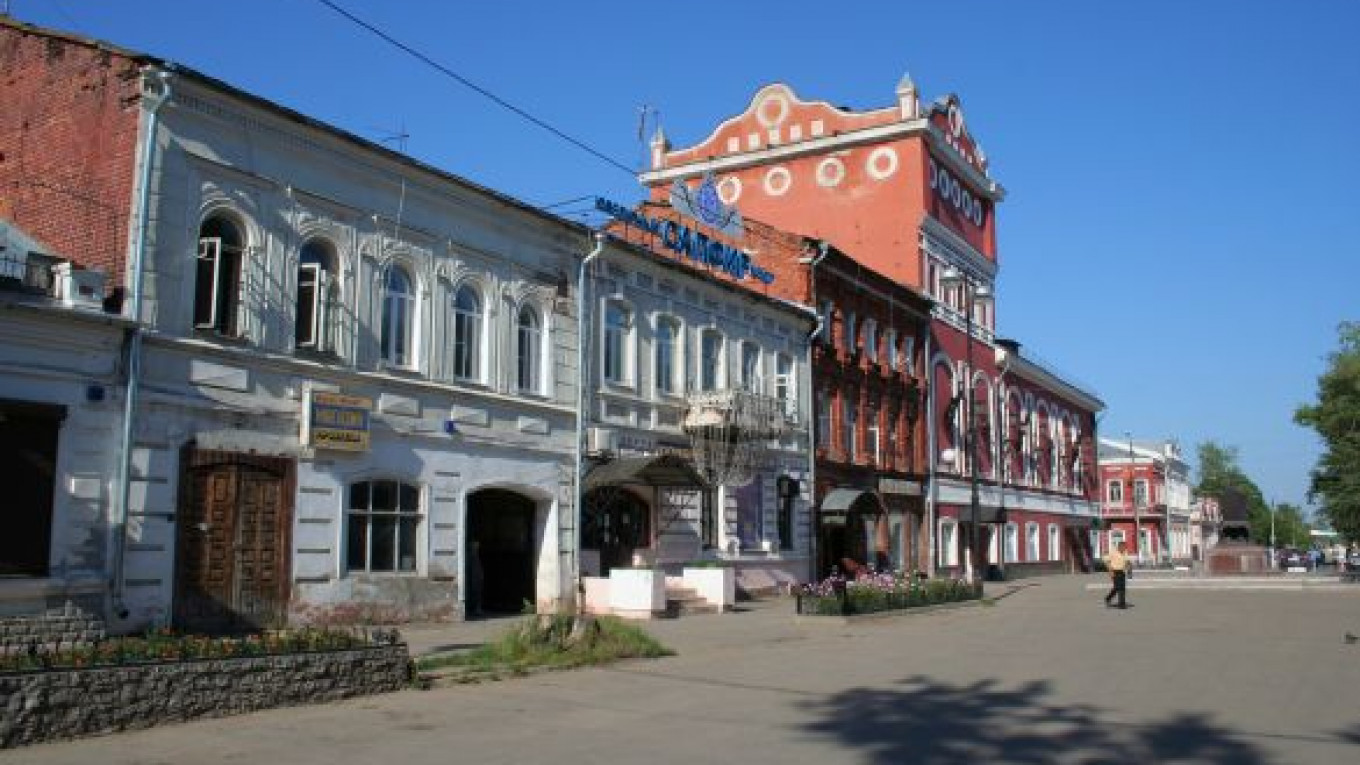“People Meet in Architecture” was the manifesto of the 12th Architecture Biennale in Venice. The topic came from Japanese architect Kazuyo Sejima and was an attempt to search for links between humans and their surrounding space.
The Russian pavilion’s exhibit fit well into the biennale’s theme with a human scale that was far from the skyscrapers on display in last year’s exhibit. The pavilion showed a proposed renovation of the small town of Vyshny Volochyok in the Tver region, as designed by a group of leading local architects headed by Moscow-based architect Sergei Choban.
“Nobody knows what to do with small towns,” said Grigory Revzin, the pavilion’s curator. “In 1993, Vyshny Volochyok was a town with a population of 78,000. Now there are 50,000 people there. Over 10 to 15 years, the population has shrunk by a third — a catastrophic situation.”
The Russian pavilion’s building was constructed by Alexei Shchusev in 1913. He would go on to design Lenin’s mausoleum later that year, and it is Lenin’s legacy that the architects were looking at in the biennale. Titled “Factories of Russia,” it looked at the ways that the now-defunct industrial life of small towns could be reinvented for the revival of such towns — and in particular, Vyshny Volochyok.
Choban and his colleagues in their designs are not so much thinking about the artistry of the buildings as about their functionality and role in creating a suitable environment. The local Aelita factory becomes a textile shop in the group’s design, and there is a neighborhood of budget homes for workers.
They kept their promise not to transform abandoned industrial constructions into contemporary art centers, as has happened in Perm. Instead, they suggested a bridge where giant clubs for Russian designers’ shows could be located.
Another Moscow-based architect, Sergei Skuratov, showed a design for a whole island near the town. It has a 2,000-seat concert hall built into the landscape, a lot of open green public spaces, a bridge and a beach.
Architect Vladimir Plotkin looks at ecology and agriculture, proposing to lay out flower and vegetable gardens all around a factory and create a network of public spaces inside, with cafes and kids’ zones.
Nikita Yavein worked with water — the main natural resource of Vyshny Volochyok, which stands between the Tvertsa and Tsna rivers. He designed new routes and boat stations around the Tabolka factory, and there is a hotel, a yacht club, an entertainment center and a water museum connected by a number of sailing canals and pools.
Visitors can see how these projects combine with the town’s charming old churches and two-story buildings in a vast diorama. There is also a video about the town, though at times the sequence gives the impression that the areas around the factory are some sort of poetic ruins. Nevertheless, the project’s humanistic nature — so rare in this country — makes up for everything.
A Message from The Moscow Times:
Dear readers,
We are facing unprecedented challenges. Russia's Prosecutor General's Office has designated The Moscow Times as an "undesirable" organization, criminalizing our work and putting our staff at risk of prosecution. This follows our earlier unjust labeling as a "foreign agent."
These actions are direct attempts to silence independent journalism in Russia. The authorities claim our work "discredits the decisions of the Russian leadership." We see things differently: we strive to provide accurate, unbiased reporting on Russia.
We, the journalists of The Moscow Times, refuse to be silenced. But to continue our work, we need your help.
Your support, no matter how small, makes a world of difference. If you can, please support us monthly starting from just $2. It's quick to set up, and every contribution makes a significant impact.
By supporting The Moscow Times, you're defending open, independent journalism in the face of repression. Thank you for standing with us.
Remind me later.






